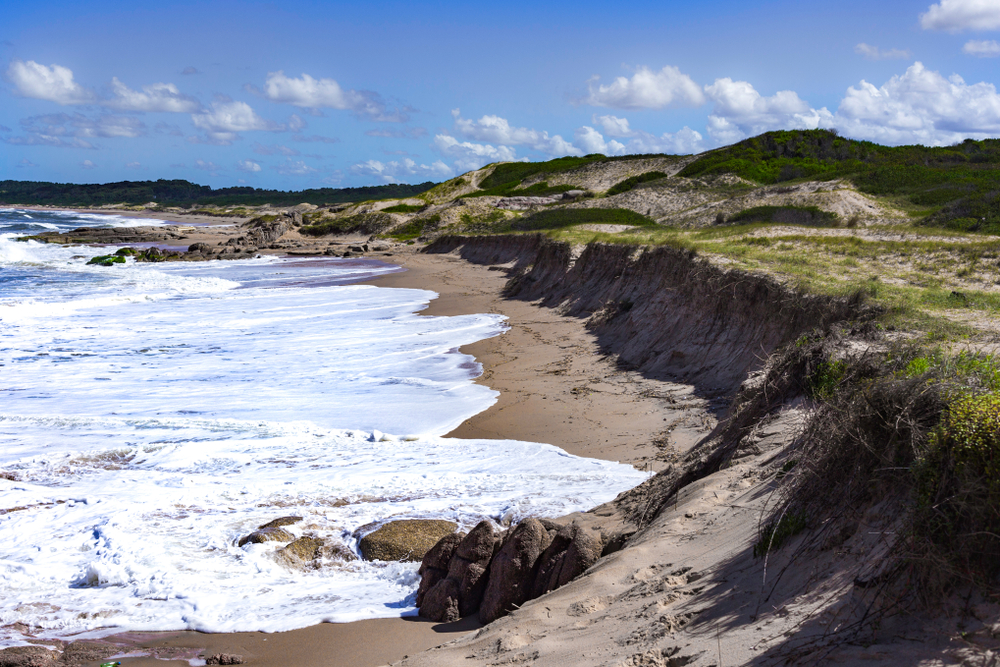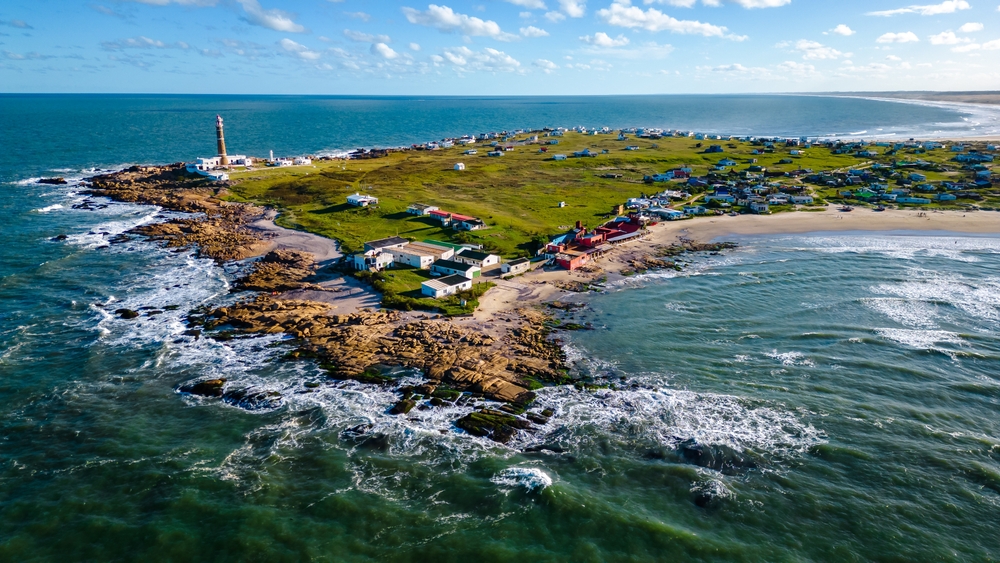Santa Teresa Overview
Santa Teresa National Park, known locally as Parque Nacional Santa Teresa, is a coastal sanctuary located in the Rocha Department of Uruguay.
Spanning approximately 11.6 square miles (30 square kilometers), the park lies along the Atlantic Ocean, nestled between the seaside resorts of Punta del Diablo and La Coronilla. Accessible via Route 9 at kilometer 302, this expansive area offers a harmonious blend of natural beauty and historical significance.
The park’s diverse terrain encompasses pristine sandy beaches, dense forests, and rolling sand dunes. Notably, it houses over 1,400 hectares of forested land, populated with more than two million native and exotic trees.
Among its prominent features is the historic Fortaleza de Santa Teresa, a fortress constructed in 1762 by the Portuguese, which stands as a testament to the region’s rich colonial past. Visitors can explore the fort’s well-preserved structures, including the command building, powder magazine, chapel, and various other facilities that provide insight into 18th and 19th-century military life.
Santa Teresa National Park is a haven for wildlife enthusiasts. The Laguna de Peña, accessible via wooden pathways leading to a scenic viewpoint, serves as a habitat for the largest reserve of capybaras in the area. Additionally, visitors might encounter axis deer, guazubirá (a type of small deer), otters, and various bird species such as chajás, white and black herons, and redfish.
The park also features “La Pajarera,” an aviary and wildlife reserve dedicated to the care and rehabilitation of endangered bird species, along with other mammals and reptiles. Here, efforts are made to assist in the reproduction of these species within captivity before reintroducing them into their natural environments.
Among the park’s popular attractions is “El Chorro,” a semi-natural pool formed by stone constructions that utilize the natural slopes to create a refreshing bathing spot amidst lush vegetation. The park boasts twelve kilometers of beaches, each with its unique charm.
Playa Grande borders Punta del Diablo, while Playa del Barco offers a more secluded experience. Playa Achiras is known for its accessibility and excellent fishing opportunities, and Playa la Moza is celebrated for having some of the best surfing waves in Uruguay.
Visitors can engage with the park through various activities. Self-guided trails meander through recreational areas, picnic spots, and public walkways, allowing for immersive exploration. The extensive camping facilities can accommodate up to 10,000 people, with options ranging from basic plots to areas equipped with electricity and water services.
For those seeking more comfort, rental houses and “carpicabañas” (tent cabins) are available, some offering sea views and amenities like barbecues and enclosed parking spaces. The park also provides essential services, including supermarkets, restaurants, a bakery, auto mechanics, medical and dental services, ensuring a comfortable stay for all guests.
In terms of conservation, Santa Teresa National Park has achieved significant successes. The establishment of the aviary and wildlife reserve underscores the park’s commitment to preserving endangered species and promoting biodiversity. The careful management of its diverse ecosystems, from forests to wetlands, reflects ongoing efforts to maintain the delicate balance between human activity and nature.
Challenges persist, particularly in managing the impact of tourism and ensuring the protection of native species, but the park’s initiatives demonstrate a proactive approach to conservation.
Santa Teresa National Park offers a rich tapestry of natural wonders and historical landmarks, providing visitors with a multifaceted experience that celebrates both Uruguay’s cultural heritage and its commitment to environmental stewardship.












































































